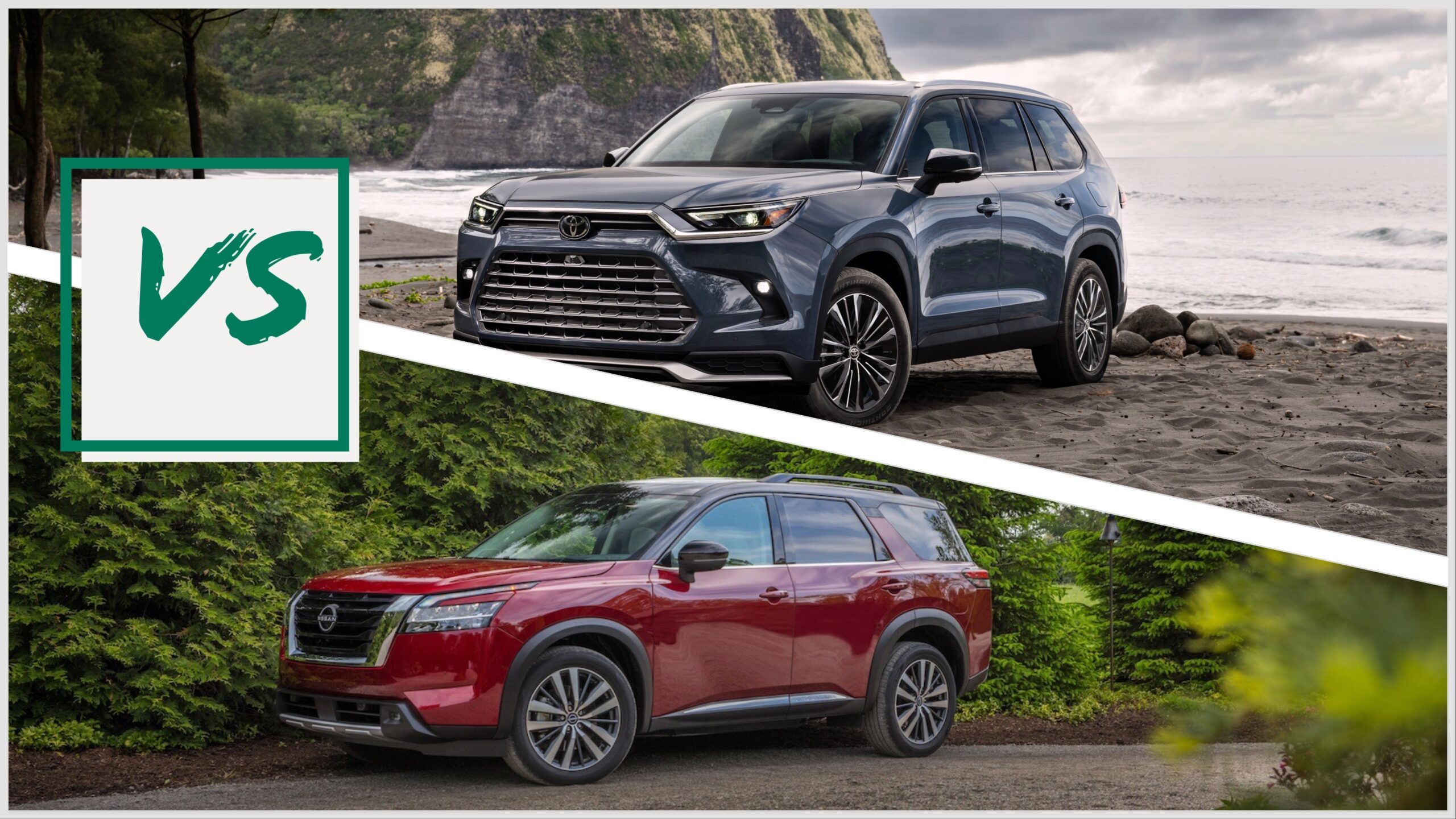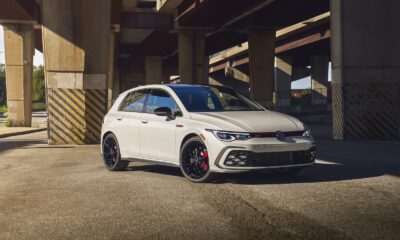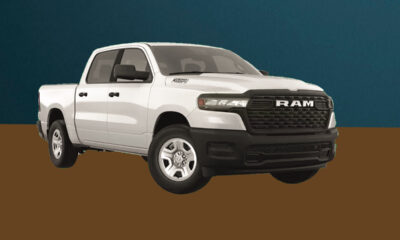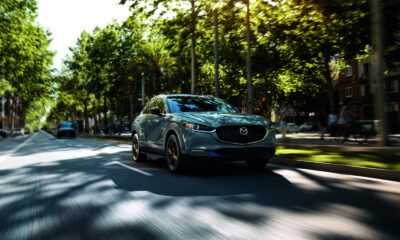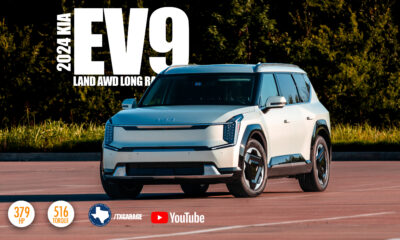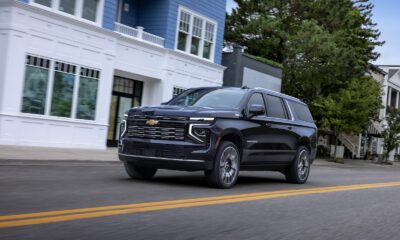Car Reviews
Grand Highlander vs. Pathfinder: TAKING THE HIGH ROAD, FINDING YOUR PATH
Grand Highlander vs. Pathfinder:
TAKING THE HIGH ROAD, FINDING YOUR PATH
When experts were absolutely certain electric vehicles were our future, Toyota received criticism for slow walking their development. The automaker said that the world is not ready for EVs in the short term for many reasons. However, consumers are hungry for the fuel savings and reliability of gas-electric hybrids, a technology Toyota pioneered in the last century.
After spending a week with two of the better examples of the two dozen midsize SUVs on the market—the 2024 Toyota Grand Highlander Hybrid and 2024 Nissan Pathfinder Rock Creek—I came away convinced the chief difference was in how each moves from point A to point B.
Both are big and beefy, capable of comfortably carrying eight people. They both have all-wheel drive, excellent digital connectivity, and state-of-the-art safety technology. And notably, both will easily outlive their warranties. However, with its advanced hybrid technology the Grand Highlander Hybrid offers a more future-proof choice. Both have hefty tow ratings: the Pathfinder, a class-leading 6,000 lbs, and the Grand Highlander Hybrid, a respectable 5,000 lbs. Neither plugs into a charger.
Let’s delve into the numbers. Despite having a larger fuel capacity (18.5 gallons vs. 17.2 gallons), the Pathfinder can only cover 426 miles on a full tank, while the Grand Highlander Hybrid can go as far as 585 miles. According to EPA estimates, a Pathfinder owner driving 15,000 miles a year and paying $3.50 a gallon for regular unleaded will spend $2,400 on fuel annually. In contrast, a Grand Highlander Hybrid owner will pay $1,600.
An $800/year difference in fuel costs means Grand Highlander buyers recoup the extra $1,200 for hybrid technology in less than two years. On the other hand, Highlanders have higher starting prices, and Nissan has surplus inventories. Toyota does not, so the Pathfinder might prove the better deal from a dollars-and-cents perspective.
One hope, dear reader, is that your fuel calculations involve more than money. The Highlander Hybrid will burn through about eight barrels of oil a year, while the Pathfinder will emit 50% more hydrocarbons. Considering that private transportation accounts for about a quarter of the pollution, wrecking the climate, reducing our emissions by half would not solve the problem, but it would be a credible start.
Let’s take a test drive:
Price ranges and trims
Toyota Grand Highlander:
- XLE: $43,000 – $45,000 (estimated)
- Limited: $48,000 – $50,000 (estimated)
- Platinum: $53,000 – $55,000 (estimated)
- Hybrid variants may add $1,500 – $2,000 to each trim
Nissan Pathfinder:
- S: $35,000 – $37,000 (estimated)
- SV: $38,000 – $40,000 (estimated)
- SL: $42,000 – $44,000 (estimated)
- Platinum: $48,000 – $50,000 (estimated)
That might seem like a massive price difference, but remember that the Grand Highlander is a step up from the regular Highlander. The Grand is seven inches longer, two inches wider, and has 15% more internal volume. It is a much more family-friendly machine.
EPA Mileage
Grand Highlander:
- Gas model: Expected 21 mpg city / 28 mpg highway/ 23 combined
- Hybrid model: Expected 36 mpg city / 35 mpg highway/ 34 combined
Pathfinder:
- Expected 21 mpg city / 27 mpg highway
Both vehicles have gasoline engines with proven reliability records.
The Pathfinder gets Nissan’s proven and responsive 3.5-liter direct-injection V6 engine. It provides 284 horsepower and 259 lb-ft of torque in its base application. Rock Creek grades crank out 295 hp and 270 lb-ft with premium fuel. Coupled with a 9-speed automatic transmission, Pathfinder’s powertrain provides strong, confident acceleration.
The Grand Highlander has three engine options: A 2.4-L turbocharged gas engine with 265 horsepower and a 0-60 time of 7.5 seconds. It delivers the same fuel efficiency as the Pathfinder’s 3.5 L. A naturally aspirated 2.5-L I-4 anchors a hybrid powertrain that puts out 245 horsepower and reaches 60 in 7.8 seconds.
A Hybrid MAX powertrain combines the best of the first two, adding to the turbo 2.4L two electric motors, making the Grand Highlander the most powerful Midsize SUV Toyota has ever built. Its impressive performance off the line is thanks to 362 horsepower, 400 lb.-ft. of torque; with that, you have a 0-60 time of 6.3 seconds.
This piece of engineering legerdemain, resulting from Toyota’s fifth-generation hybrid system, is about much more than power. Optimally controlled torque to each of the four corners improves control in inclement weather and provides impeccable controllability and stability, even when driven—to be honest—above the speed limit on mountainous roads.
Depending on the driving situation, the system continuously adjusts between a 70:30 and 20:80 front- and rear-wheel power split. This provides the feel of rear-wheel-drive maneuverability, straight-line stability and responsive acceleration.
Nissan cannot compete with the nimbleness of such a large vehicle. The company has announced plans to electrify its fleet in a plan it calls “The Arc.” No firm timelines are yet in evidence.
Strengths and weaknesses
Grand Highlander:
- Strengths: Superior fuel economy, spacious interior, Toyota’s reputation for reliability.
- Weaknesses: Higher initial cost, especially for hybrid models; conservative styling may not appeal to all.
Pathfinder:
- Strengths: Robust towing capacity, off-road capability, bold design.
- Weaknesses: Lower fuel efficiency, lack of hybrid option
Major competitors
Both vehicles compete with models such as the Honda Pilot, Ford Explorer, and Hyundai Palisade. The Grand Highlander’s hybrid option gives it an edge in fuel economy. The Pathfinder’s off-road capabilities are comparable to the Explorer’s, while its interior space rivals the Palisade. The Pilot offers a balance of features but may fall short in fuel efficiency compared to the hybrid Grand Highlander.
Ford’s hybrid Explorer costs about the same as a top-of-the-line Grand Highlander but delivers fuel economy similar to that of the Pathfinder.
Ride and comfort
The Grand Highlander offers a smooth, refined ride that is typical of Toyota’s SUV offerings. Its suspension is tuned for comfort, providing excellent absorption of road imperfections, but handling feels best in class.
The Pathfinder, while comfortable, offers a slightly firmer ride due to its off-road-oriented suspension. It sacrifices ride softness but does not gain handling prowess.
Cabin comfort
Both vehicles offer modern infotainment systems and advanced driver-assistance features. The Grand Highlander features Toyota’s latest infotainment system with a large touchscreen display. The Pathfinder counters with Nissan’s ProPILOT Assist technology, offering semi-autonomous driving capabilities.
Both SUVs provide ample space for passengers. The Grand Highlander offers more third-row legroom, making it more suitable for adults in all seating positions.
Cargo and towing capacity
With all seats folded, the Grand Highlander provides 98 cubic feet of cargo space, while the Pathfinder provides up to 80.5 cubic feet.
For towing, the Pathfinder has a slight advantage with a capacity of up to 6,000 pounds, while the Grand Highlander matches the regular Highlander’s 5,000-pound capacity.
Reliability and depreciation
Toyota’s longstanding reputation for reliability gives the Grand Highlander an edge. Both vehicles will likely hold their value well, but Toyota models traditionally experience less depreciation than their Nissan counterparts.
Warranties
Both manufacturers offer similar warranty coverage:
- Basic warranty: 3 years/36,000 miles
- Powertrain warranty: 5 years/60,000 miles
- Toyota provides additional coverage for hybrid components: 8 years/100,000 miles.
What others are saying
Early reviews of both vehicles have been positive. The Grand Highlander’s spacious interior, fuel-efficient hybrid option, and comfortable ride draw consistent praise. Reviewers see it as a class leader in practicality and efficiency.
The Pathfinder has received accolades for its improved styling, off-road capabilities, and towing capacity. Critics appreciate its blend of ruggedness and family-friendly features.
Both vehicles draw applause for modern technology and high quality.
Bottom line
The 2024 Toyota Grand Highlander and 2024 Nissan Pathfinder each offer unique strengths catering to different consumer needs. The Grand Highlander excels in fuel efficiency and passenger comfort, making it an excellent choice for families who prioritize economy and space. The Pathfinder, with its robust towing capacity and off-road prowess, appeals to those with more adventurous lifestyles.
One suspects that buyers of either will be pleased with their selection.



